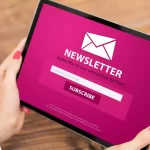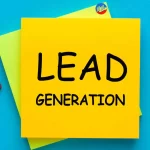There are a lot of principles for email marketing all around. Just go about it, and you’ll discover various tutorials on what you need to do to succeed with your email marketing.
It’s easy to become lost in them. It was focusing on things that weren’t truly the purpose. Although they contribute, the outcome is not directly reliant on them.
In this guide, we will look at the underlying principles by which everything stands and collapses. Let’s look at what’s actually essential.
I’ll simply remind you before that…
Email marketing is alive
Email marketing is still the most successful marketing method on the Internet.
Despite the fact that we have many more opportunities to communicate and advertise our goods and services.
Social media or chatbots are wonderful for gaining people’s attention and interaction, but if you want to sell, you need to send EMAILS.
Sure, people don’t respond to them the way they did years ago. But it still applies that:
- The return on email marketing is $36 for every $1 spent. (constantcontact.com)
- 49% of customers would want to get an email from their favourite company every week (Oberlo.com)
- 81% of SMEs use email marketing as their major source of client acquisition, and 80% for customer retention. (Oberlo.com)
- In 2017, 3.7 billion people have established email boxes around the globe, and the number of users is predicted to climb to 4.6 billion by 2025. (Statista.com)
Investing in email marketing is absolutely worth it.
But…. you have to do it well. Based on long-standing values.
1. Content is more essential than form
It amazes me how much time we spend making a basic email seem amazing. Sure, it will be viewed by thousands of people, but they are interested in the content first and, subsequently, the graphics.
It’s not only about email marketing. It’s about a really fundamental marketing premise.
Pay major attention to the content. And only then what coat you offer him.
But it’s simpler to concentrate on the graphics than fine-tune the message. You can notice that millimetre in the graphics, but the texts still seem the same.
It turns out that it takes hours to solve the template, graphics, how wide and bright the banner will be, how it appears on various devices, positioning the picture perfect to the millimeter, etc. And the material is ready in 5 minutes. After all, what counts is that the readers enjoy it.
And that’s incorrect.
It should be the exact opposite. Spend hours on content. Keep the “5 minutes” for the visual side.
No one will log out since you don’t have graphics. But everyone who unsubscribes is doing so because they don’t like your message.
The material must intrigue the receiver. Bring him something, aid him with something. They must discover solutions to their questions in it. That’s the crucial thing. It would be best if you illustrated why people should purchase from you and not that you are a graphic super-master.
Minimalism in the right place
For that reason, I prefer to send “plain” text emails. When I communicate with others, I recommend them to them as well. At most, we are talking about basic templates that are put up once, and that’s it.
Then email marketing is mostly about that content. About a message that offers a product, service or simply a click.
In the case of e-shops, the situation is different. Everyone moans over the emails Ebay writes and wants one too. If you have content to develop and a graphics and technological crew that churns out hundreds of emails a week, then why not.
For a routine email once or twice a month, simply add a picture to the signature or opt for a simple design. You add a logo, establish business colours and confirm that it is responsive. This implies that the email appears nice not just on a computer display but also on a mobile phone or tablet.
But that puts it off. No frills surrounding are required. They distract the receiver’s attention from the basics and may not appear correctly in various browsers and devices.
Focus on your message and create a clear call to action.
2. Email marketing must provide results
Numbers are clouds in email marketing. Open, click-through, contact activity, etc., etc. All those data are essential, yet it’s still just an auxiliary number.
It is vital to sit down once a year, quarter, or month and ask yourself the question: ” Does this activity bring me results?” “
And what outcomes may these be? If you’re operating a company, it’s only and only money.
You may talk about your high openness at conferences, but they won’t sell you a roll.
Maybe if you boost your local bakery’s email open rate, you’ll receive a few out of delight, at least until her employer finds that people do read emails, but possibly at the cost of purchases since sales are falling.
I have to say to myself, “We sent X emails, and it brought us Y.”
Maybe you receive something monthly, weekly or even daily. Maybe you spend a full year creating a database in order to conduct a huge launch in a few days. Such outcomes are significant.
With this point of view, it is thus simpler to observe that an email had a low openness. Maybe yes, even a few individuals unsubscribed, but again it brought us many times more sales.
The routes of money are unpredictable, and it might happen that someone chooses and buys based on the monthly newsletter. In industries where you have to wait many years before the client wakes up, these are the expected outcomes.
Openness and clickability hint to me which route to travel. But the outcomes tell me whether I truly move in that direction.
Statistics are subservient to results, not the other way around.
3. What works must be repeated
A marketer jumps into the meeting: ” Our new newsletter had an opening rate of 27.4% and produced $ 38,765. “
The Boss replies to this: ” Wonderful, try to make something equally as well next time .”
A moment of silence and a hesitant response:” Boss, how about we use the same newsletter again? And again…? And again…? “
Autoresponders are not beneficial only because they save you valuable time. It will allow you to employ what works repeatedly.
Think of a bot as a sequence of email messages delivered consecutively at predefined intervals. Following a client or site visitor doing an activity.
For example, people fill out a form, view an article, download a brochure, sign up for a webinar, and click on a link. And they will do it automatically without your involvement. And they don’t care whether it’s midnight or Sunday.
This is their huge advantage. They will assist you in making your marketing communication more efficient. You put them up once, and they will function for many months or years.
Want everyone to know what you have to offer?
Repeat what worked best for you in the past while presenting and what people reacted to best. Turn it into an automaton, which will portray you in the best light to every new prospect and deliver all the required information.
Want to enhance sales?
Take your greatest promos and put them together to display to people who haven’t seen them. Sales systems, funnels, etc., are built on this.
You can construct automatons from scratch. It’s very contemporary these days. But since individuals lack expertise, they have to depend on templates and frequently waste a lot of time before they understand that what they’ve come up with in their thoughts doesn’t work very well.
You have a great advantage when you do not construct an automaton from the start but employ what has shown itself and has previously produced proven results in the past.
Once you discover anything that works, repeat it until it works.
4. People only purchase from… people
Would you rather purchase a new phone when Apple writes to you or when Steve Jobs writes to you?
There is a distinction between a brand sending a newsletter and a human sending it. After all, a person built a brand to hide behind it.
Apple is a great brand. One of the finest in the world. However, we frequently purchase its items because of what Steve Jobs has done for Apple. For his legacy, which may be vanishing more and more.
A lot of small firms and entrepreneurs hide behind a brand name or a bland “Team XYZ” in email marketing. And then they are astonished when email marketing performs badly.
A person first buys a person (who tells me this), next the message (what he tells me) and lastly, the brand (who does it for).
Instead, organize for certain persons to introduce themselves and tell their unique tales. One will identify with it considerably more than with polished corporate words.
Don’t be scared to let them glimpse inside the hood of your firm. Even an email message saying you went racing with your coworkers has its place in your communication strategy. Although you probably won’t sell any things based on this email, it will undoubtedly assist you in creating a connection with your readers.
Every email that gets out must have a responsible person. Forget about info@firma.com and the XYZ corporate staff. They won’t add you points.
Accept responsibility, don’t be bashful and sign yourself respectfully. No one will pull your head off for it.
On the contrary, it will make you want to respond since you will feel that someone will read your letter. And, of course, you will also answer him. Let’s act like people.
By exposing your human face, you develop confidence in yourself and hence in the brand you represent.
5. The right material to the right people at the right time
This is how we might “very simply” explain the notion of segmentation. Not looking at the whole contact database as one monolithic entity but observing individuals at various phases of the purchase process.
How to do it?
Track and tag connections you obtain from various sources, magnets, and social networks. Distinguish between customers and prospects. If you provide more things, then according to the preferences of what customers purchase.
It is easy to compile one newsletter with a mobile phone offer and send it to all your contacts. But from a person’s point of view, there is nothing worse than receiving an email with a discount a week after purchasing the phone.
Yes, outcomes are more essential than consumer feelings. So I’ll provide one more example.
Send an email with a special offer for your course to people who have just signed up and haven’t bothered to browse around. He doesn’t even realize that you have such a course on offer. This can already cost you unneeded money.
You will obtain considerably better results by not spending time on newsletter graphics but by sending diverse emails to different audiences. Ones that best meet their demands and the stage in the client journey they are presently at.
Send another email to people who just downloaded your magnet and are just beginning to know you. Typically inside an autoresponder.
On the contrary, you send not one but numerous sales emails in succession, with information about a new product, to long-term clients who know everything.
Therefore, it is necessary to maintain these contacts separate and placed in the correct box.
Think about email not from one person’s viewpoint but from several persons at various points of the purchase cycle.
There is more
I could go on all day about tons of things like testing that offers the answer to everything or the value of a database and gathering contacts.
For now, I have picked five key concepts I have been following in email marketing for many years and am applying them to my projects. And the Financebode email marketing system is based on them.
They aren’t for everyone, but they work for us and offer what we want from email marketing.
What principles do you employ to send emails?
Were there too many? Or have I forgotten anything important? Write in our Facebook group! How you see email marketing.





